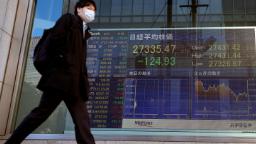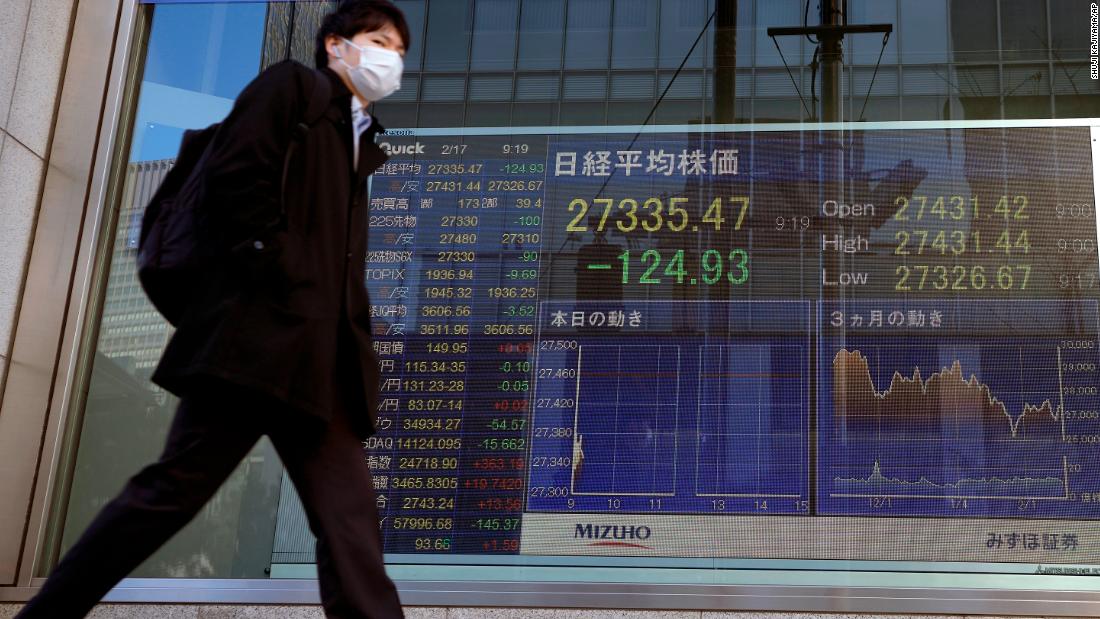
Australia’s S&P/ASX 200 and Japan’s benchmark Nikkei (N225) closed down 1% and 0.4%, respectively, while South Korea’s Kospi (KOSPI) was little changed.
Chinese markets were mixed. As the benchmark Shanghai Composite (SHCOMP) Index gained 0.7%, Hong Kong’s Hang Seng Index (HSI) dropped 1.9%.
In Europe, stocks were little changed at the open. London’s FTSE 100 (UKX) and France’s CAC 40 (CAC40) each rose 0.2%, while Germany’s DAX (DAX) ticked up 0.1%.
The moves followed a terrible Thursday for the Dow (INDU), which plummeted 622 points, or 1.8% — hitting its lowest level so far this year in the process. The S&P 500 (SPX) fell 2.1% and the Nasdaq (COMP) was down 2.9%. All three indices are now in the red for the week.
US futures pointed up slightly on Friday, with Dow futures, S&P 500 futures and Nasdaq futures rising 0.6%, 0.7% and 0.8%, respectively.
Market watchers are nervous about what a military conflict between Russia and Ukraine could mean for oil prices and the global economy, especially if the United States and major economies in Europe become involved.
Investors detest uncertainty. A full-blown invasion of Ukraine would trigger a knee-jerk selloff in stocks as businesses confront the possibility of an oil shock, higher inflation and a sanctions regime.
A prolonged market downturn would wipe out wealth built up by families in the stock market and in retirement accounts. Market instability could also dent confidence among consumers and businesses.
-— Paul R. La Monica, Charles Riley and Matt Egan contributed to this report.

